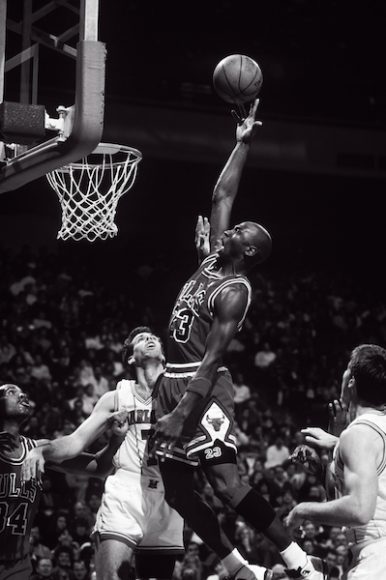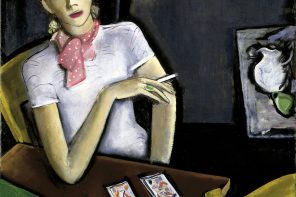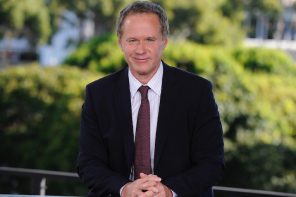Where have you gone, Joe DiMaggio?
Our nation turns its lonely eyes to you…
– Simon and Garfunkel, “Mrs. Robinson”
In the spring of 1997, I was working full-time as senior cultural writer for what is now The Journal News; caring for my beloved Aunt Mary, who raised me and was still recovering from two hip replacements; and serving jury duty at the United States District Court for the Southern District of New York in White Plains. I was stressed out beyond belief and, not surprisingly, became ill with a sinus infection, for which my family had little sympathy.
Feeling completely at sea that season as well as mightily sorry for myself, I collapsed in bed on the night of June 11 and turned on the TV for some distraction. The fifth game of the NBA Finals was on, with the Chicago Bulls and the Utah Jazz tied two games apiece. I’m not a big basketball fan, but sometimes the greatest relaxation comes from watching an event in which you have no rooting interest, so I decided to leave it on. It soon became clear, however, that this would be no ordinary contest.
The Bulls’ central star, Michael Jordan, was clearly not himself. The announcers speculated that he was suffering from some kind of flu or stomach virus. (In the recent ESPN series “The Last Dance” — about Jordan’s career, particularly his last season with the Bulls — he claimed it was food poisoning.) Whatever the problem, you could see he was really sick — sweating profusely and apparently vomiting into a towel.
But Jordan had decided to go all in. With the chance to go up on a very fine Jazz team, led by John Stockton and reigning MVP Karl Malone, Jordan endured, building slowly, pacing himself but hanging in. He would finish the game, in which he played 44 long minutes, with 38 points, seven rebounds, five assists, three steals and one block as the Bulls won 90-88. Two nights later, they would seal the championship. But the “Flu Game” would remain one of the most memorable of Jordan’s career.
That night I realized something I had forgotten but often remind myself of now: Life isn’t fair, and it isn’t easy. What matters is the courage to endure, to keep chipping away as you wait for your moment and then try to make the most of that moment. (As it turned out, personally and professionally, 1997 would be one of the best years of my life.) Great philosophers and leaders have said as much about perseverance in adversity, but rarely is the lesson brought home the way it is in a sporting arena. It’s a lesson that athletes and their fans will have to take to heart now more than ever.
I don’t have to tell you that these are probably the most challenging times for the sporting community since World War II. Due to the coronavirus, premier events have been canceled (the Spring Horse Shows at Old Salem Farm in North Salem, Wimbledon), postponed (the French Open, the Tokyo Olympics) or moved. (After eight seasons at Old Salem Farm, the American Gold Cup is relocating to the larger Flintfields Horse Park in Traverse City, Michigan.)
In the wake of Covid-19, the various disciplines have gotten creative as they scramble to salvage their seasons, exhibiting a Jordan-ian grace under pressure. For the first time since 1931, the Triple Crown is being run out of order, with the last race, the Belmont Stakes, shortened from 1 ½ miles to 1 1/8, having gone first on June 20; the Kentucky Derby, usually the first race, slated for Sept. 5; and the Preakness, the second race, finishing up on Oct. 3. (See Page 28.)
Golf’s U.S. Open Championship, which was moved from June to Sept. 17 through 20 at Winged Foot Golf Club in Mamaroneck, will feature an all-exempt field, having dispensed with the qualifying rounds (Page 16). Tennis’ US Open will take place as scheduled from Aug. 31 through Sept. 13 at the USTA Billie Jean King National Tennis Center in Flushing Meadows-Corona Park, Queens, which has been used as a makeshift hospital and staging area for meals for hospital workers and underserved schoolchildren (Page 18).
But just as with the protocols in baseball – which has struggled since its long-awaited return July 23 – implicit in all these changes is the big one, no fans. An exception: Greenwich Polo Club will allow limited public participation in the East Coast Open Aug. 30 through Sept. 13. (Page 20).
This has led sportswriters, fans and players alike to opine about the loss of spectators to spectator sports. The 2014 US Open men’s singles champion Marin Čilić even suggested that playing the tournament without the fans — the Open’s raucous soundtrack — would taint it, as if it were merely practice.
This concern over fan-less games follows along the lines of the thought experiment “If a tree falls in a forest and there’s no one there to hear it, does it make a sound?” — the idea being that sound requires perception. (Actually, sound requires vibrations, so yes, it makes a sound.)
But here’s something perception requires — imagination. It takes imagination to understand the roles of the player and the fan and their relationship to each other. Like performing artists, some athletes feed off a live audience while others shrink from it. Regardless the player, particularly in a highly individualized sport like tennis or golf, plays primarily for himself, So a Marin Čilić is going to have to fight his way through the US Open draw all by his lonesome. A crowd, no matter how large and supportive, can’t do it for him.
Just as an athlete doesn’t really need a live audience, the fan doesn’t need to be in that audience. Unlike a spectator — who has no rooting interest beyond the opportunity to witness an event, live or televised — a fan is someone who has psychological connection with an athlete or a team, whether he knows them or has any physical proximity to them or not. Indeed, long before the days of multimedia and globalization, people who had never set foot in New York were fans of teams like the New York Yankees. That’s true today.
One of the greatest explorations of this psychic connection is Ernest Hemingway’s Pulitzer Prize-winning novel “The Old Man and the Sea” (1952). It tells the tale of the down-on-his-luck fisherman Santiago, who struggles to land a marlin. For two days and nights, he struggles, injuring himself in the process but – taking comfort in the idea that if Joe DiMaggio, the Yankees’ legendary centerfielder could come back from bone spurs, then he could hold the line against the great fish despite his agony and loneliness.
Like the arts, all sports are metaphors for those thoughts and feelings we can’t always confront directly. The “Flu Game” was my “Old Man and the Sea” moment. I realized that if Jordan could come off the bench sick as a dog to help win a vital game, then I could at least meet whatever life had in store for me.
And if sports can come back however imperfectly in what has been a cruel season, we can do no less.





